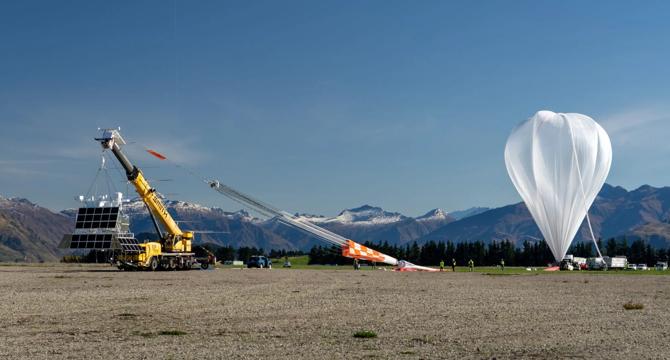Nasa
1M
219

Image Credit: Nasa
NASA Super Pressure Balloons Return to New Zealand for Test Flights
- NASA's Scientific Balloon Program has returned to Wānaka, New Zealand, for test flights of their super pressure balloon technology, scheduled for missions of 100 days or more in the Southern Hemisphere.
- Launch operations are set to begin in late March from Wānaka Airport, NASA’s designated launch site for mid-latitude, ultra long-duration balloon missions.
- Primary objective is to test and qualify the super pressure balloon technology, with flights hosting science missions and technology demonstrations like HIWIND, CoMIC, and HIGS.
- The super pressure balloon will be used to measure neutral wind in the thermosphere, detect atmospheric pressure changes for seismic activity readings, and capture sound waves in Earth’s stratosphere.
- The balloon, similar in size to a stadium, will float at around 110,000 feet altitude, providing a stable platform for scientific research in the near-space environment.
- The closed system design of the balloon offers enhanced stability and reduced altitude fluctuations compared to zero pressure balloons.
- Real-time tracking of the balloon's path can be followed online, and launch information will be shared across NASA's social media platforms and blog.
- This marks NASA's sixth super pressure balloon campaign in New Zealand since 2015, conducted in collaboration with local partners for mission success.
- NASA's Wallops Flight Facility manages the scientific balloon flight program, with Peraton operating the Columbia Scientific Balloon Facility.
- The NASA Scientific Balloon Program is funded by the NASA Headquarters Science Mission Directorate Astrophysics Division, aiming for long-duration research from the Southern Hemisphere's mid-latitudes.
Read Full Article
13 Likes
For uninterrupted reading, download the app